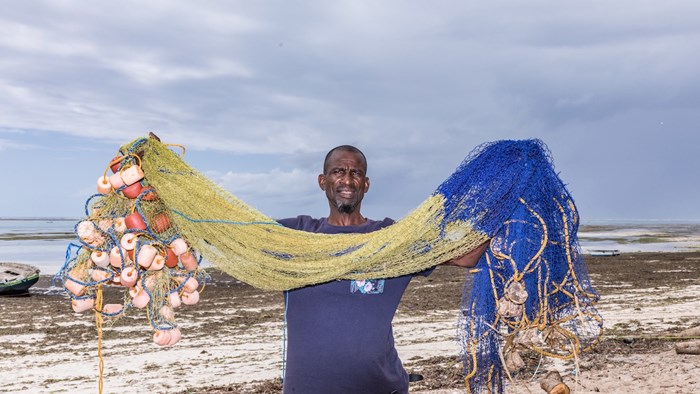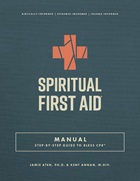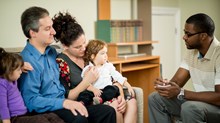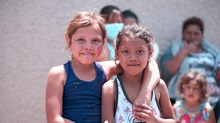3 Steps to a Better Understanding of Poverty

It’s easy to look at those living in poverty and think we can fix it simply by donating money or goods. While the intention may be admirable, that way of thinking will never break the cycle of poverty. At best, it will act as a Band-Aid.
If our goal is sustainable community development, or empowering a community to lift itself out of poverty, we must fully understand the “problem” we are trying to solve. And that kind of discernment is only possible through thorough research and understanding of the community.
Here are three steps you, and your church or organization, can take to increase your understanding of poverty:
Be Ready to Listen
In Mark 6:35-44, Jesus asks his disciples to feed 5,000 people. They come back to Him, saying, “That would take more than half a year’s wages! Are we to go and spend that much on bread and give it to them to eat?” But all Jesus says is “Go and see.” It would be easy enough if Jesus had skipped the “go and see” part and just performed the miracle of multiplying five loaves of bread and two fish to feed the crowd. Instead, He understood the importance of first truly seeing those we seek to help.
Understanding the unique needs of a community takes patience and humility. You’ll need to engage with not only a community’s leaders but also its members, asking questions and really listening to the answers. It’s vitally important to deeply understand not just the needs but also the assets of that community.
Here are some examples of questions to ask:
-
What kind of resources are readily available?
-
What gifts, talents and capacities do members of the community possess?
-
What aspects of community life are working well already?
-
What are the social, spiritual, economic, power and political dynamics?
-
How many physical, natural assets are in the community?
-
What is the community’s history?
Listening will build trust, and you’ll nurture a feeling of community ownership and empowerment.
Take a Holistic Approach
The world looks different when viewed through the eyes of an impoverished person. In the year 2000, the World Bank conducted a research study called Voices of the Poor that brought together the experiences of over 60,000 poor women and men from 60 countries around the world. Using open-ended qualitative and participatory research techniques, the study aimed to understand poverty from the perspective of poor people and to illuminate the human experience behind poverty statistics.
It turns out that while poor people do mention lack of material things, they more often tend to describe their condition in social and psychological terms: shame, inferiority, humiliation, fear, social isolation. Their lives are characterized by powerlessness and voicelessness, which limit their choices and define the quality of their interactions with the rest of the world.
For this reason, in order to truly help those in need, our approach must be holistic, taking into account the community and individual’s values for their overall well-being. A holistic approach responds to people’s lives as a whole, instead of singling out specific spiritual or physical needs. When we carefully listen to individuals, they help us see strategic opportunities hidden in the context of community threats. This framework inspires positive action for change, rather than simply focusing on needs or problems.
A holistic approach helps us to look at poverty from different angles and diagnose the root of the disease so that we can apply the right treatment (and not just treat the symptoms). It helps move people out of poverty because it literally transforms people. This approach changes mindsets, hearts, and a vision for life, which is ultimately a miracle of God.
Adopt a Kingdom Mindset
When citing Matthew 25 as a holy mandate to help the least of those among us, we usually focus on the last part of the chapter about feeding the hungry, clothing the naked, welcoming the stranger, and ministering to those who are in prison. However, we are meant to understand this portion in context with the rest of the chapter.
There’s a common thread in the Parable of the Ten Virgins, the Parable of the Bags of Gold and the Sheep and the Goats. They are all lessons that talk about the value of stewardship. Clearly Jesus is aligning personal responsibility, accountability and stewardship of resources with helping the ones in most need. This is stewardship in action.
When we help guide and empower people in their communities to understand they were created in God’s image and that they have an identity and a purpose which moves them to enjoy the fullness of life in every dimension, we can see the change of their hearts and minds.
Transformed people transform others. They inspire each other, take action, and organize and advocate for themselves. While they welcome anyone who wants to join them in the process of transforming their communities, they are not passively waiting with their hand extended to be helped. They’re not expecting or waiting for others to rescue them.
These agents of change are responsible and accountable for how they use their resources, gifts, and talents to break dependency and own their transformation. In turn, they impact the community’s social, spiritual, economic, and environmental dimensions. Only then do we have true sustainability.
There’s an old proverb that says, “If you give a man a fish, you’ll feed him for a day. If you teach a man to fish, you’ll feed him for life.” True sustainable community development goes far beyond that. We believe in not only teaching the man to fish, but also how to set up at market, handle his money, and manage his business.
Beyond that, another goal is to help the fisherman understand the value in re-investing some of the profits of his business (buying nets, boat maintenance, and hiring and training staff). In addition, learning to be a good steward and supporting his community and church is also a valuable outcome that has the power to reach exponentially. We must help the fisherman multiply his talent in the best way possible, so that his fishing business can sustain itself without continued support.
Let me be clear: poverty alleviation work is difficult. Whether you work on small interventions or with large organizations (like I do), it can be overwhelming. However, with God’s help, we can tackle not only the symptoms of poverty, but also its root causes–if we first seek to understand.
Astrid Cortes is the Director of Sustainable Livelihoods at Food For The Poor. Astrid’s work alleviating poverty is not just a job, but rather a personal calling that she’s been “in the trenches” with most of her career. Seven Saves, a new program powered by Food For The Poor, gives individuals and churches the resources they need to help a LAC community by feeding hungry children and sponsoring projects to provide Bibles, water filtration systems, school supplies, fruit trees or supplies for local churches.
The Better Samaritan is a part of CT's
Blog Forum. Support the work of CT.
Subscribe and get one year free.
The views of the blogger do not necessarily reflect those of Christianity Today.






















